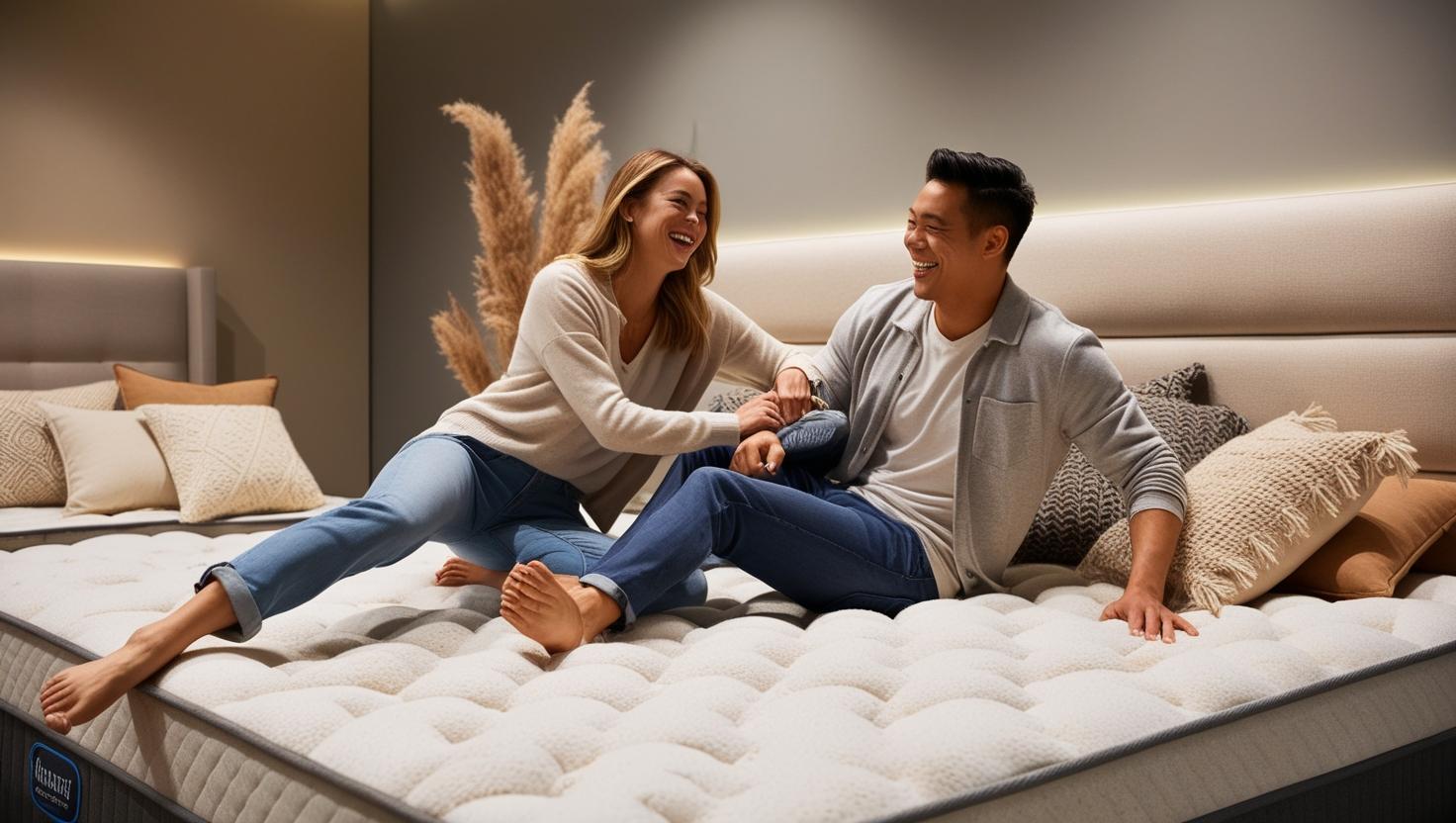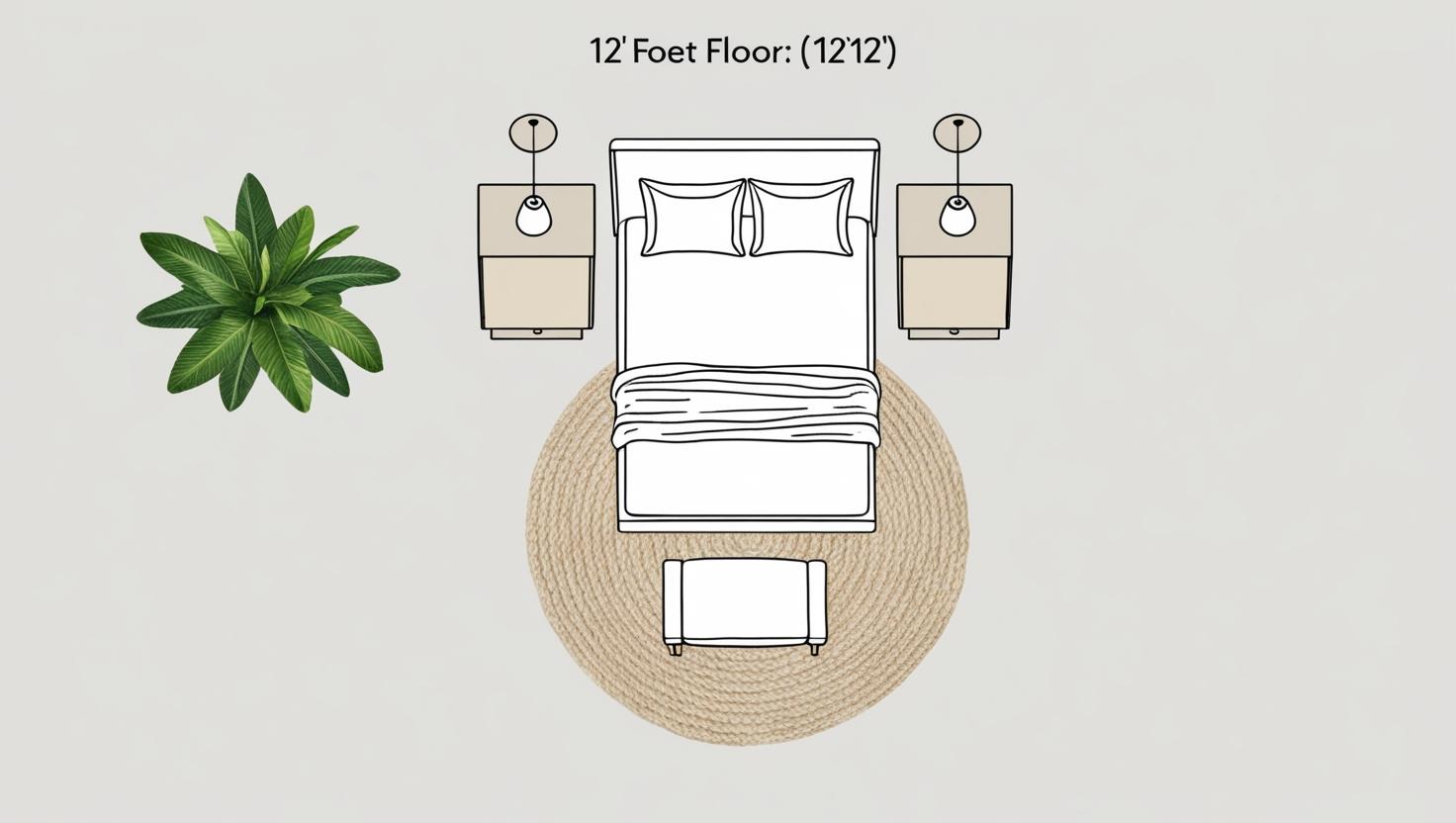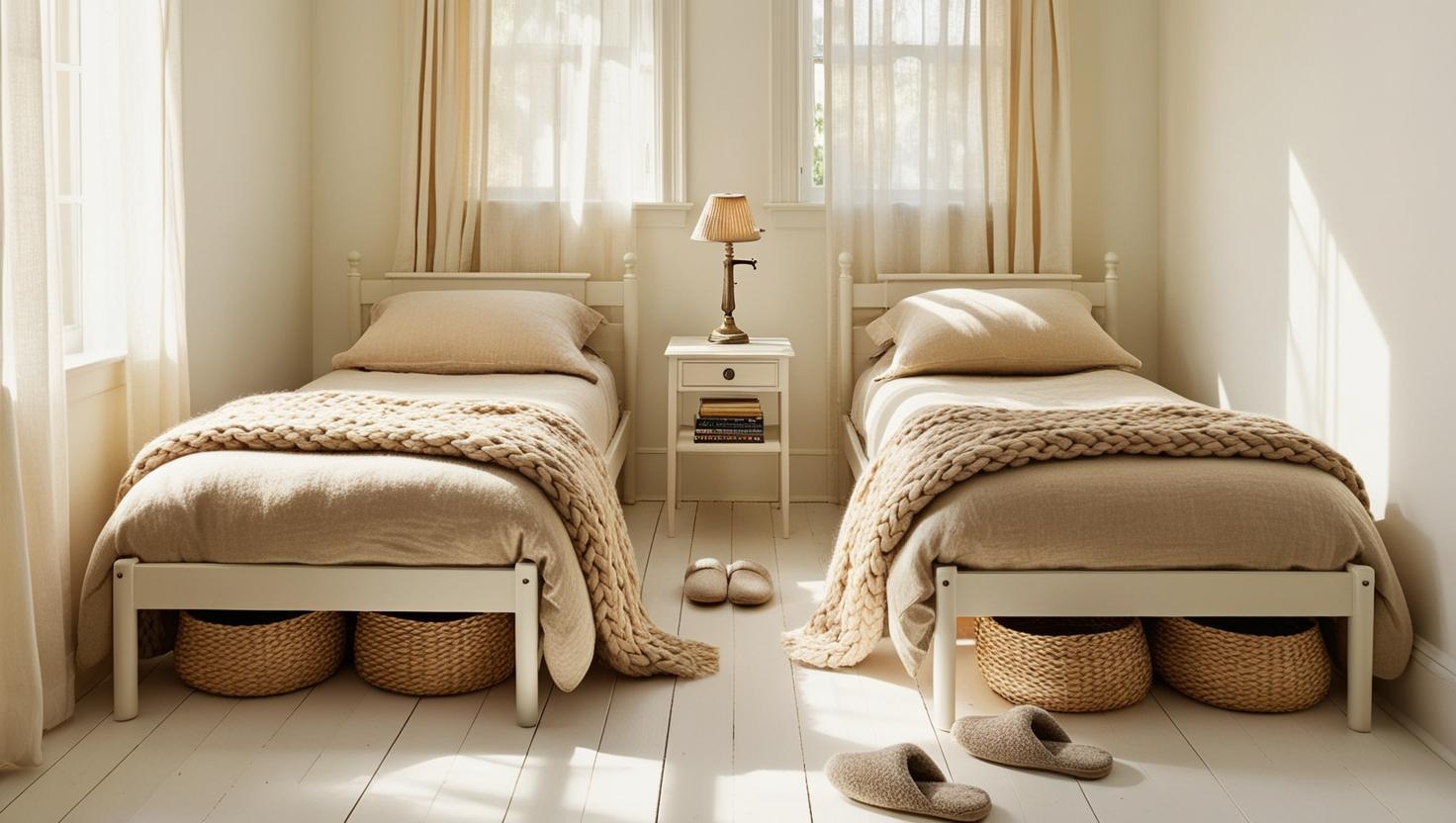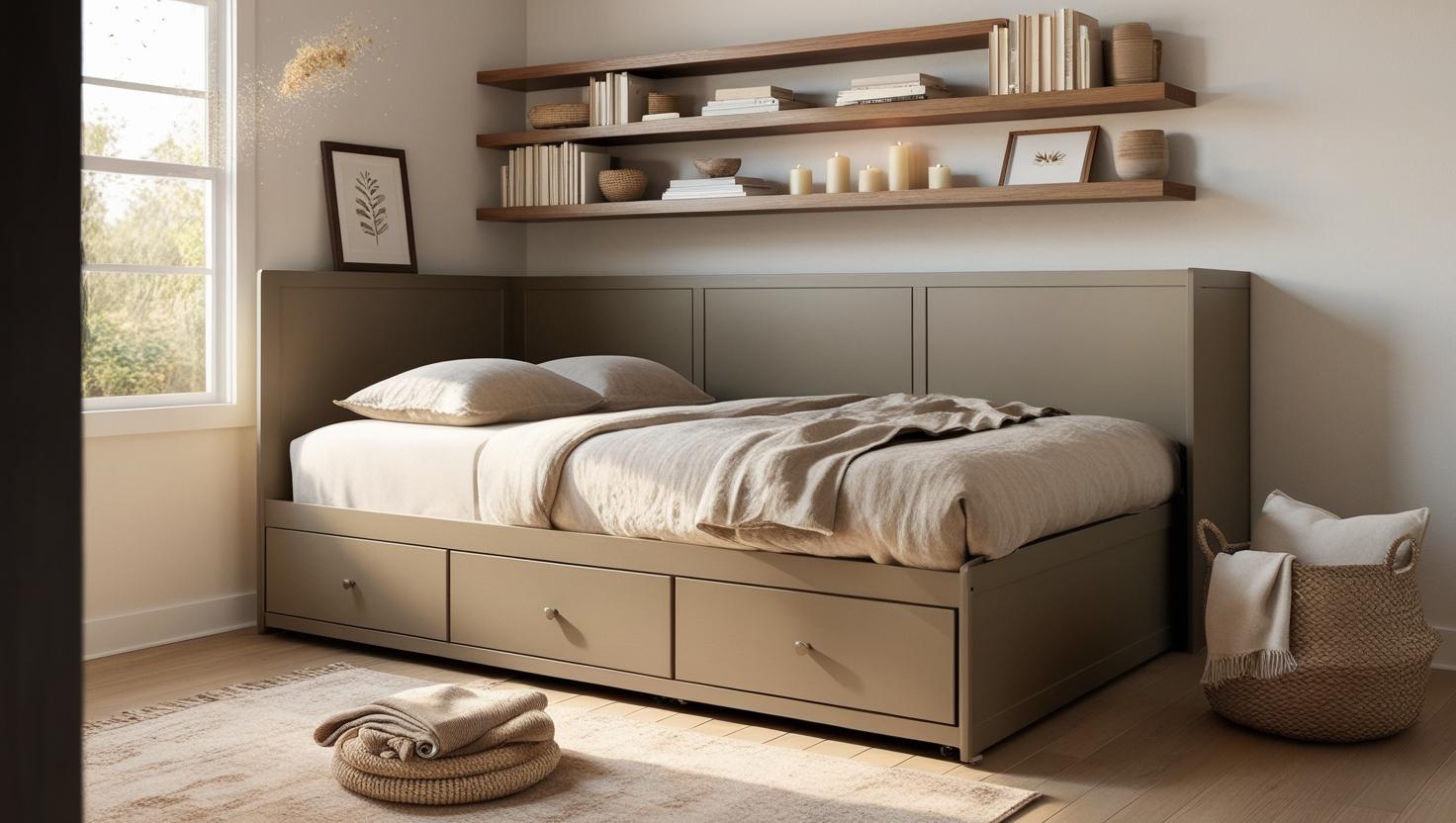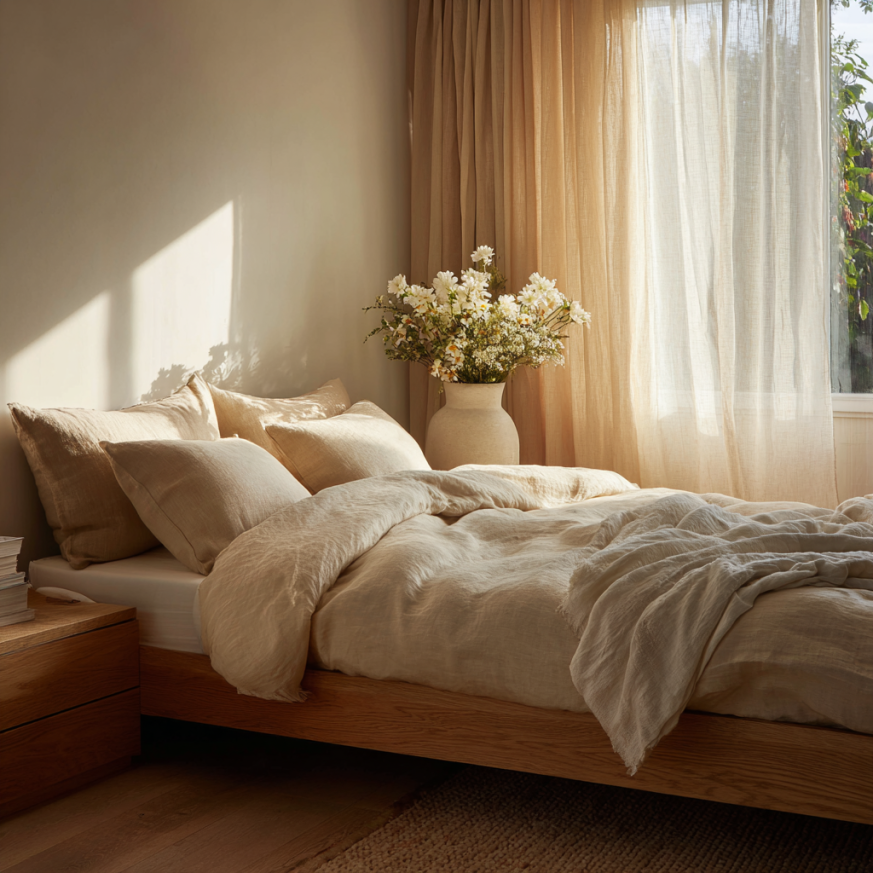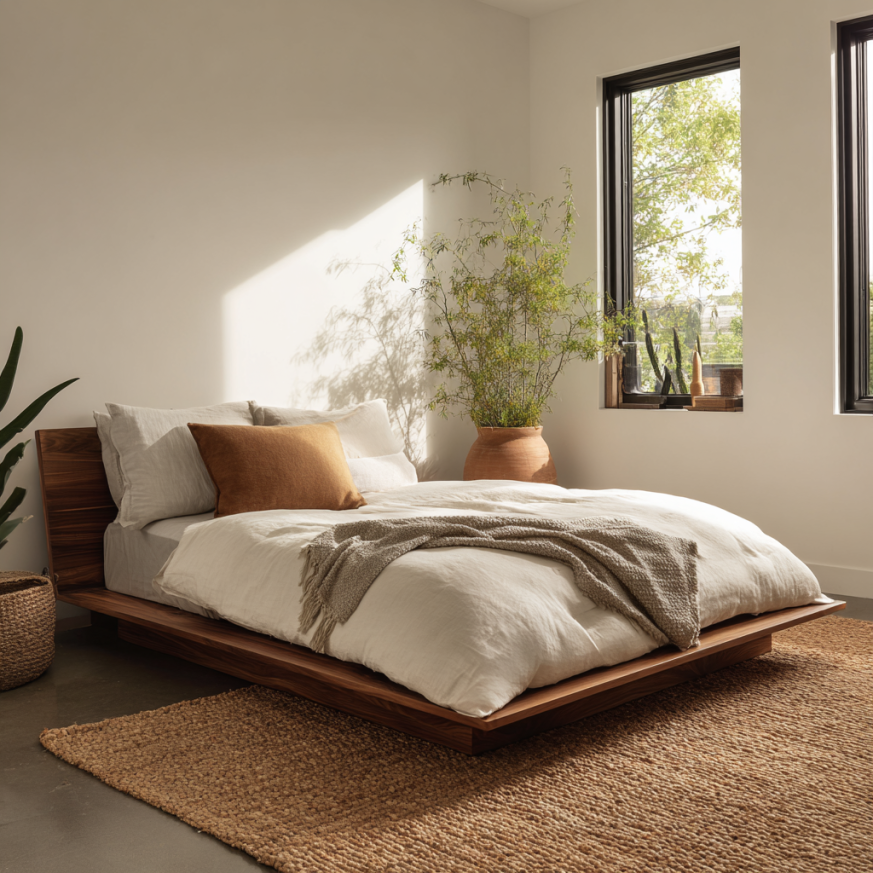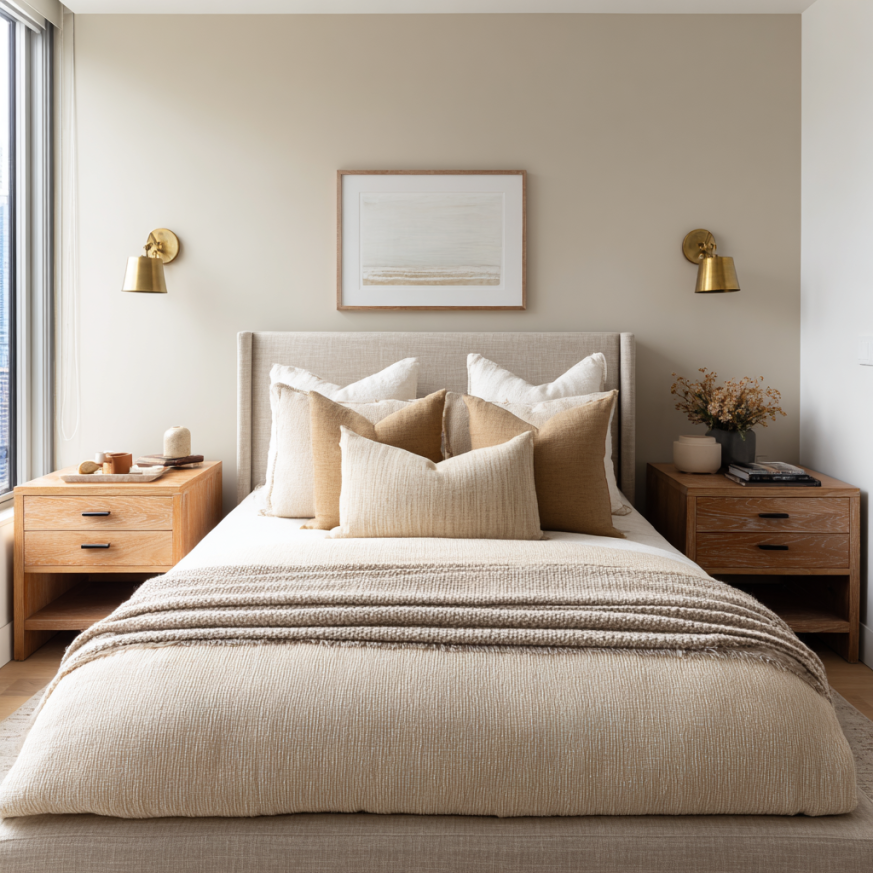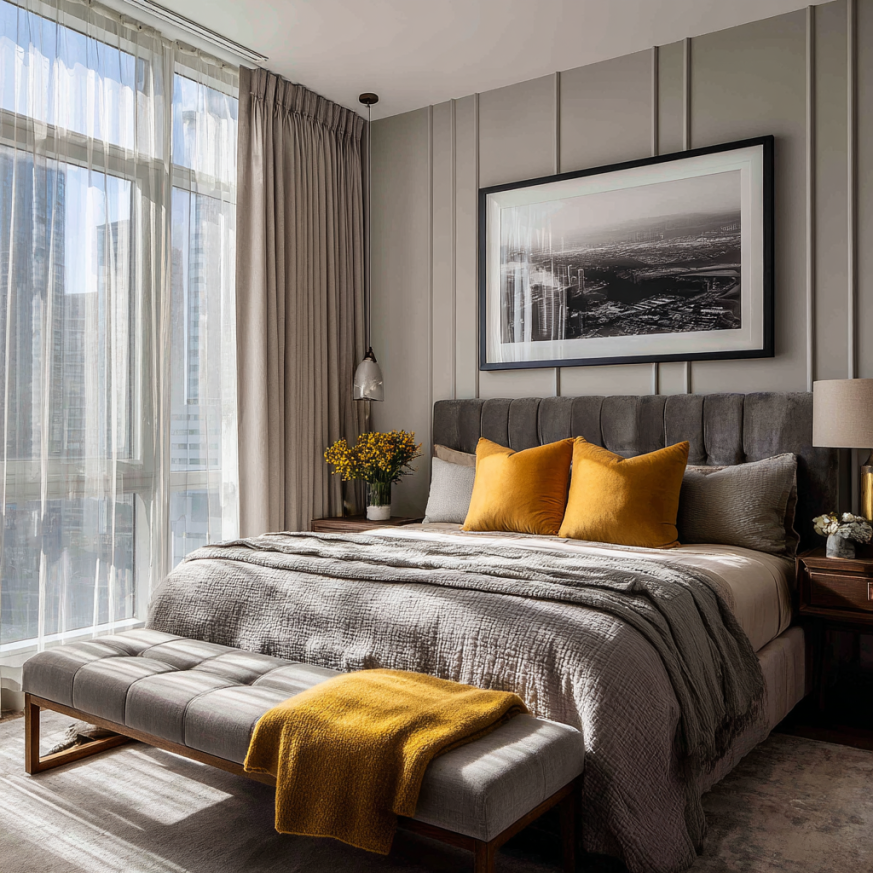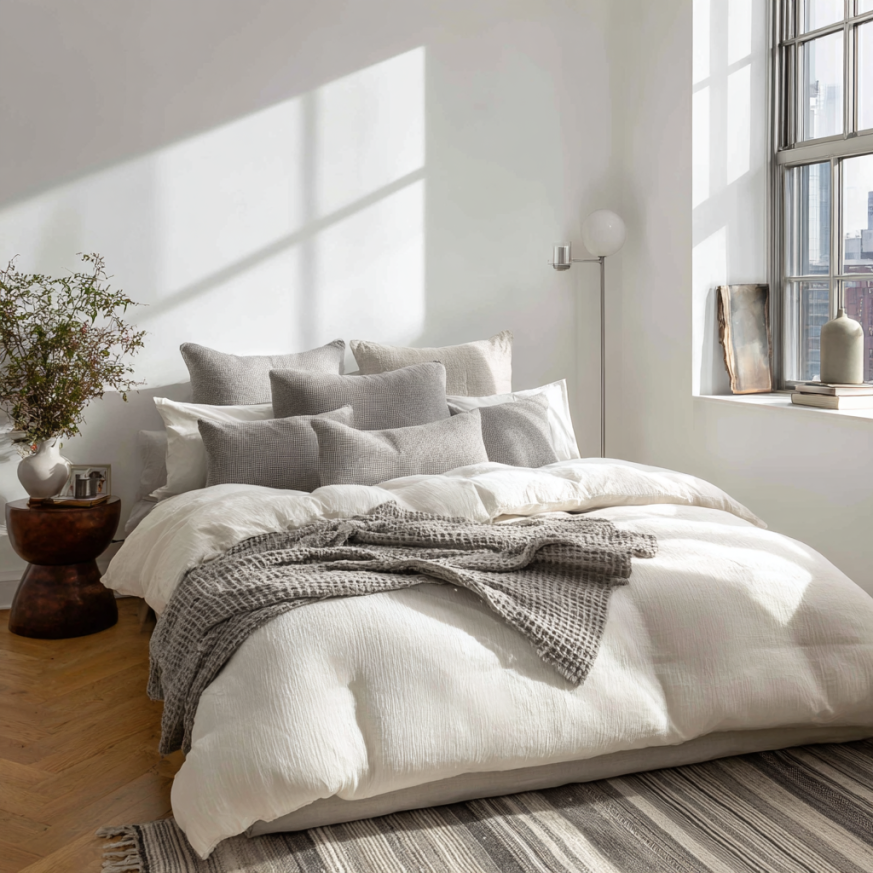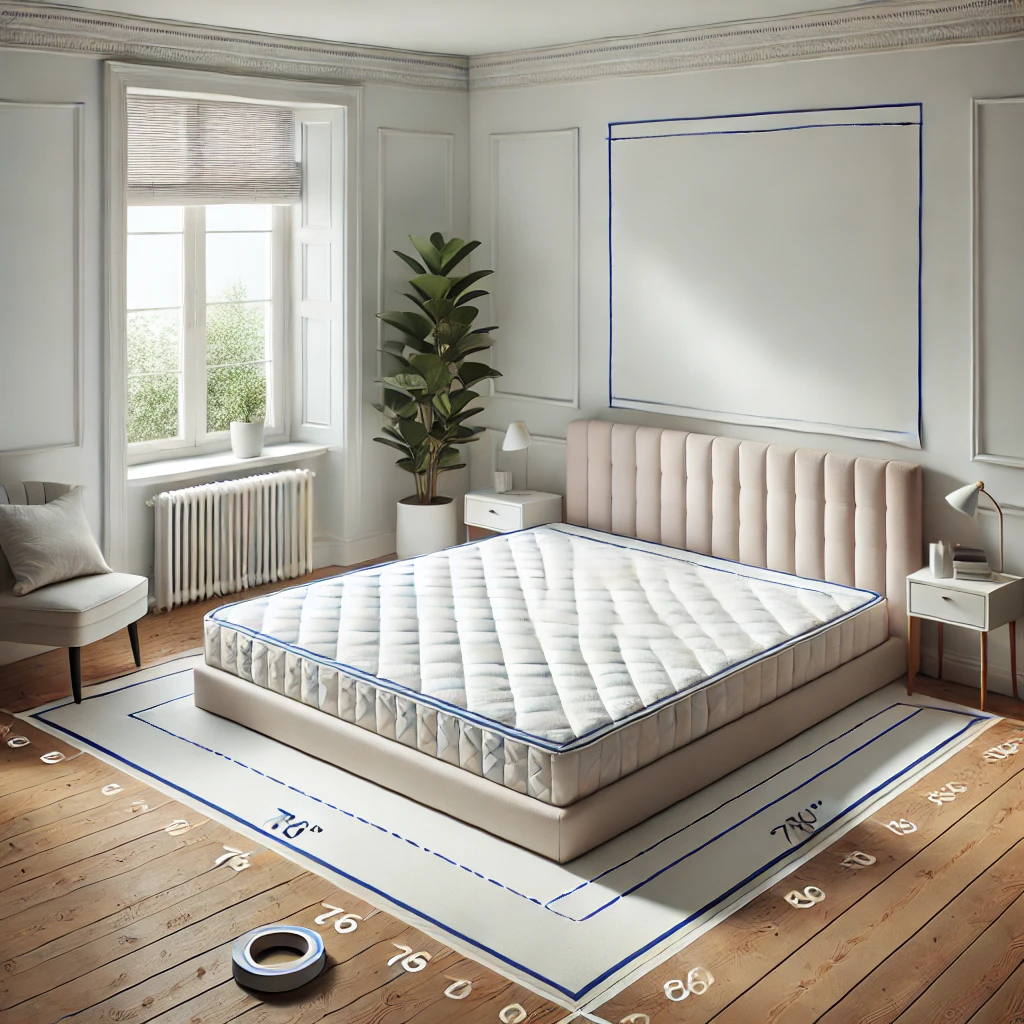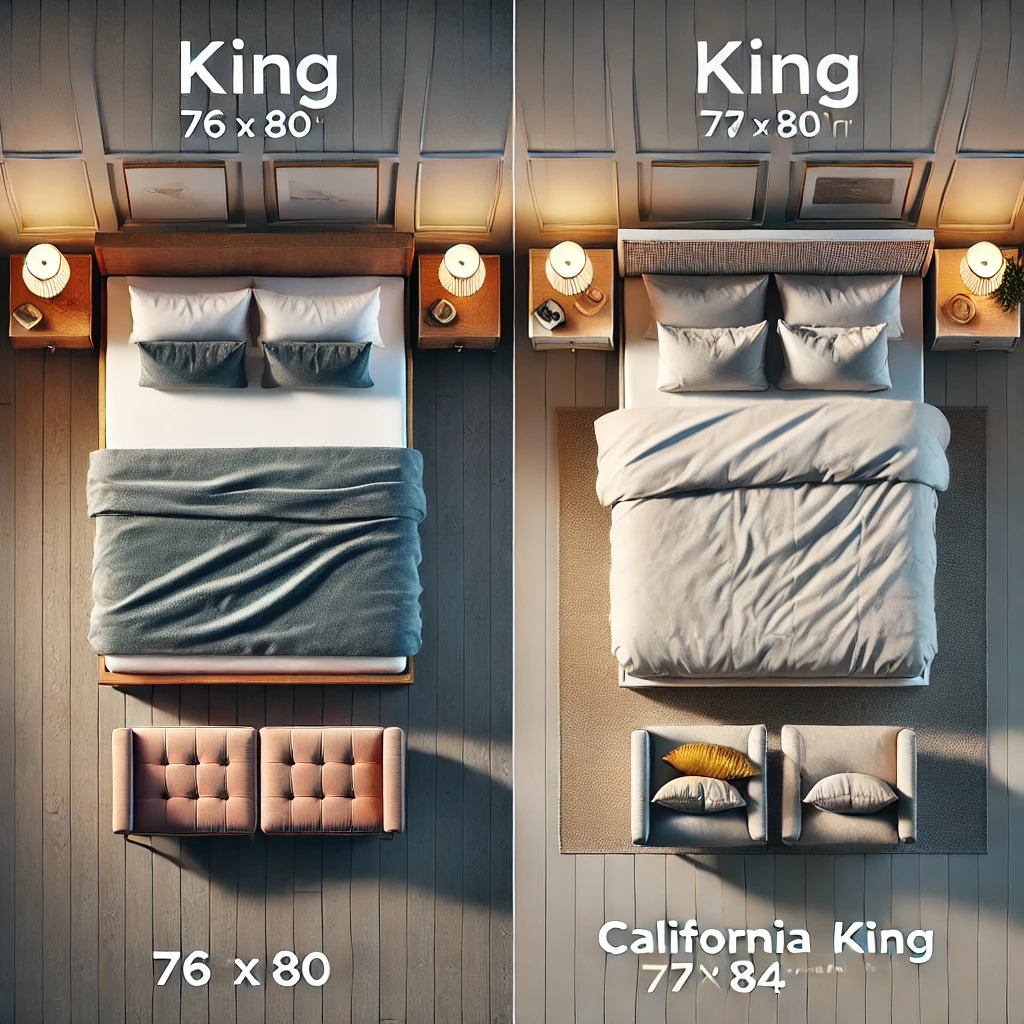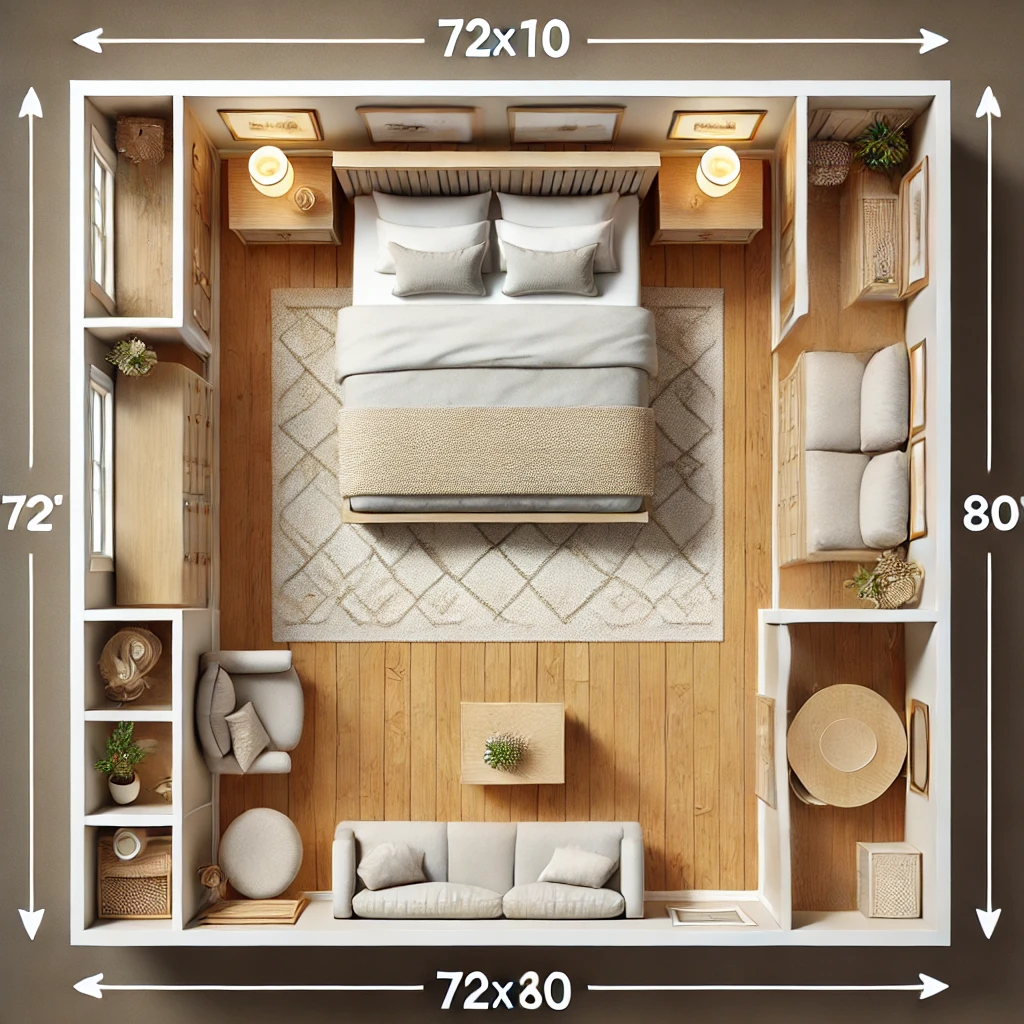Best Bed Width for Room
Finding the best bed width for room balance means blending space, comfort, and flow. With the right size, you’ll create a bedroom that feels open, restful, and beautifully functional.
Key Takeaways: Best Bed Width for Room
- Measure carefully to find the best bed width for room fit without crowding walkways.
- Smart layouts and vertical storage make smaller bedrooms feel larger.
- Choose bed sizes that match your lifestyle—and consider eco-friendly bedding materials.
1) Measure Your Room Accurately
The foundation of choosing the right bed width starts with measurements. This ensures comfort and safe clearance.
- Room dimensions: Record length and width.
- Obstacles: Note windows, doors, radiators, and closets.
- Clearance: Leave 24–36 inches around open sides for comfort.
Room Size Guide
| Bed Size | Minimum Room Size (ft) | Clearance (in) |
|---|---|---|
| Twin | 7 × 10 | 24 |
| Full | 10 × 10 | 30 |
| Queen | 10 × 12 | 30 |
| King | 12 × 12 | 36 |
Want more details? See our Space-Saving Bed Frames guide for maximizing clearance.
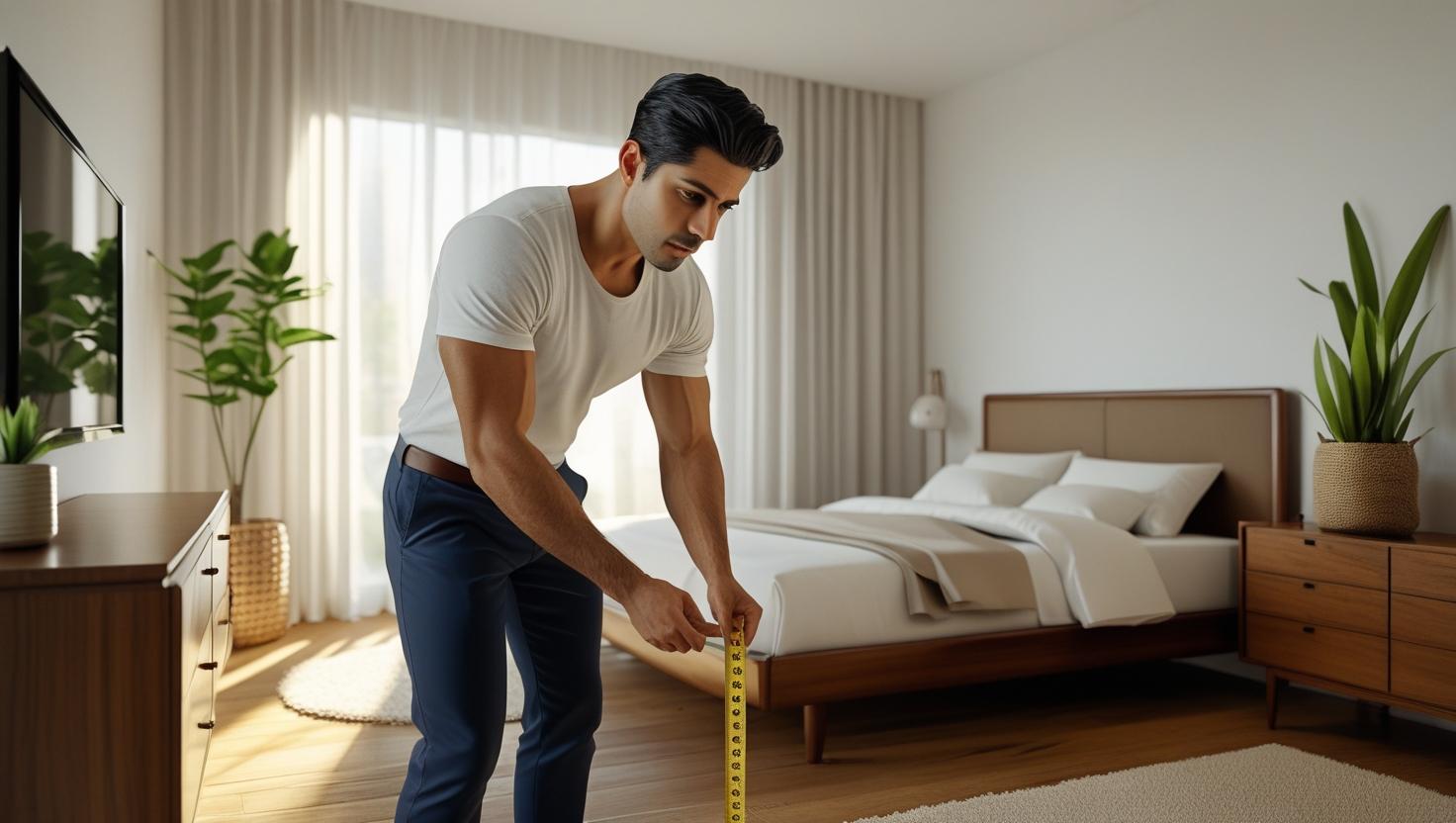
2) Optimize the Layout First
Layout can make or break bedroom flow—even more than the bed width itself.
- Against a wall: Ideal for children’s rooms and narrow spaces.
- Centered: Adds symmetry, especially with twin nightstands.
- Corner: Frees up precious square footage in small apartments.
Pro tip: Outline your bed with painter’s tape to test door swings and drawer clearance.

3) Standard Bed Widths Explained
The most common widths range from Twin to California King. Each comes with trade-offs in comfort and space.
4) Matching Bed Width to Room Shape
Long, narrow rooms may need a narrower bed, while square rooms comfortably support Queen or King sizes.
5) Lifestyle and Sleeping Needs
Solo sleepers may enjoy a Full, while couples often prefer a Queen or King for nightly comfort.
6) Eco-Friendly vs Conventional Beds
Eco-conscious bedrooms thrive with organic bedding and responsibly sourced frames.
- Conventional: May include chemical finishes and shorter durability.
- Eco-friendly: Uses natural fibers, sustainably harvested wood, and breathable layers.
7) Certifications to Look For
When buying a sustainable bed, look for:
- GOTS (Global Organic Textile Standard)
- OEKO-TEX Standard 100
- FSC-certified wood
8) Trusted Brands
Consider approved, well-known bedding names like:
- Parachute Home
- Avocado Green Mattress (eco-certified materials)
- Sleep Foundation’s top-rated sustainable picks
9) Visual Tricks for Small Rooms
Light wall colors, floating shelves, and platform frames visually expand tight spaces.
10) Clearance Matters More Than You Think
Even with a smaller bed, cramped clearances reduce comfort. Prioritize walking space over mattress size.
11) Storage-Savvy Solutions
Opt for under-bed drawers, wall-mounted sconces, and narrow dressers to keep aisles open.
12) When a Bigger Bed Still Works
In small rooms, larger beds succeed if paired with slim furniture and vertical storage.
FAQ
- What is the minimum room size for a Queen bed?
- At least 10 × 12 feet, leaving 30 inches on each side.
- Can a King bed fit in 12 × 12?
- Yes, with slim furniture and mindful layout.
- Is a Full bed good for two adults?
- It works, but a Queen provides more comfort and elbow room.
- How do I maximize a small bedroom?
- Choose a slimmer bed frame, use vertical storage, and maintain 24–30 inch walkways.
See our Feng Shui Bedroom Layout guide for flow-friendly tips.
Final Thoughts
Finding the best bed width for room is about more than mattress size—it’s about lifestyle, clearance, and comfort. Choose breathable eco-conscious bedding, measure generously, and design around flow. Explore more solutions at Cozy Bed Quarters for your next upgrade.

